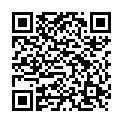|
|
|
| Module code: ABBG46 |
|
|
4V (4 hours per week) |
|
5 |
| Semester: 4 |
| Mandatory course: yes |
Language of instruction:
German |
Assessment:
Exam (minimum of 75% to pass) 60 minutes Air Law, 30 minutes Operational Procedures
[updated 01.10.2020]
|
Exam recurrence:
The information regarding exam recurrence is found within the exam policy of the study programme (ASPO).
|
ABBG46 (P410-0027) Aviation Business (Basic), Bachelor, ASPO 01.10.2015
, semester 3, mandatory course
ABBG46 (P410-0027) Aviation Business (Basic), Bachelor, ASPO 01.10.2018
, semester 4, mandatory course
|
60 class hours (= 45 clock hours) over a 15-week period.
The total student study time is 150 hours (equivalent to 5 ECTS credits).
There are therefore 105 hours available for class preparation and follow-up work and exam preparation.
|
Recommended prerequisites (modules):
None.
|
Recommended as prerequisite for:
ABBG411 ATPL Test Preparation
ABBG63 Instrument Flight Training
ABBG64 Multi-Crew Cooperation
[updated 11.02.2020]
|
Module coordinator:
Studienleitung |
Lecturer: Studienleitung
[updated 01.10.2018]
|
Learning outcomes:
Airlaw II
After successfully completing this part of the course, students will have knowledge about international air traffic services, the organization of search and rescue services, security and accident investigation. Detailed knowledge of flight procedures outlined in PANS-OPS and PANS-ATM will enable the students to plan, prepare and carry out commercial flights in accordance with instrument flight rules.
Operational Procedures II
After successfully completing this part of the course, students will have advanced knowledge about the regulatory framework of commercial flight operations and the procedures that are used. The focus will be set on the transportation of dangerous goods, the management of ETOPS and long range flights, all weather operations, and emergency procedures during commercial air transportation. Students will be able to apply this knowledge in the decision making process of planning and conducting flight duties.
[updated 01.10.2020]
|
Module content:
Airlaw II
1. IFR flight rules
2. Search and rescue
3. Accident investigation
4. Security
5. Procedures for air navigation services and aircraft operation PANS-OPS
6. Procedures of air traffic management PANS ATM
7. Aircrew regulations Part FCL, Part MED
Operational Procedures II
1. Flight and cabin crew regulations according to Regulation(EU) 965 2012 Part CAT
2. Dangerous goods
3. ETOPS and long range flights
4. Polar navigation
5. Transatlantic flights
6. All weather operations
7. Special operations and hazards
7.1. Cabin decompression
7.2. Fire and smoke
7.3. Emergency landings
7.4. Fuel jettison
[updated 01.10.2020]
|
Teaching methods/Media:
Lectures, exercises/ppt and keynote presentations, white board, flip chart, iTunes U, iPad or MacBook,
[updated 01.10.2020]
|
Recommended or required reading:
- ATPL learning objectives, EASA 2016
- ATPL Airlaw, Slate Ltd. 2013
- ATPL Operational Procedures, Slate Ltd. 2012
- AIP Germany
- Regulation(EU) 965 2012 Part CAT / AMC and GM to Part CAT
- Regulation (EU) 923 2012 Part SERA / AMC and GM to Part SERA
- Regulation(EU) 1178 2011, 245 2014 Part FCL, Part MED / AMC and GM to Part FCL
- ICAO Annex 1, 2, 6, 7, 8
- ICAO DOC 8168
- ICAO DOC 4444
[updated 01.10.2020]
|


